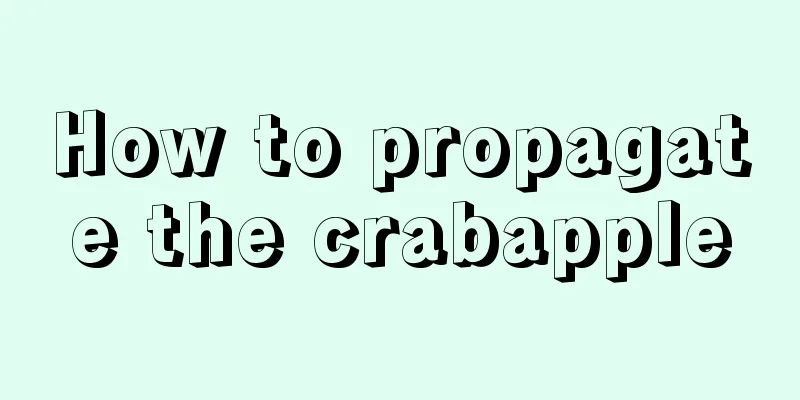When is the best season for rose cuttings (the best season and method for rose cuttings)

When is the best time to take cuttings of roses?Spring is a good time for cuttings because the temperature begins to rise, all things begin to revive, and roses also enter a season of rapid growth. The survival rate of cuttings is high at this time. In addition, the most suitable seasons for rose cuttings are: 1. Autumn (most suitable, cuttings after flowering); 2. Spring (second best), 3. Winter (suitable in most areas in the south and a small part in the north). Rose cuttings in spring(1) First, try to choose healthy branches after the roses have bloomed in spring and after pruning the remaining flowers. The branches should be freshly bloomed and not too old or too tender. They should be active and can be reused without wasting them. I used to throw them away, but this year I took some cuttings. (2) Secondly, choose the inward-facing branches and blind buds that have been pruned. These branches are very good for practicing. Blind bud cuttings have an advantage that new buds will not sprout quickly, which consumes less nutrients for rose cuttings, and the cuttings are more likely to survive and take root. The cuttings should have at least a pair of leaves. Leave 2 leaves on each cutting and cut the lower end at an angle . It is not recommended to take cuttings of dormant roses in early spring . Because roses will sprout first in early spring, but the branches will sprout first, which will inevitably consume the nutrients of the branches first, affecting the growth of the root system and causing false growth. Then, after the nutrients of the rose cuttings are exhausted, the branches will turn black. Therefore, in early spring, the rose branches before budding are not suitable for cuttings. Autumn cuttings of Chinese rosesThe conditions for selecting cuttings in autumn are the same as those in spring, and branches pruned after flowering are still the best. Moreover, autumn is more suitable for cuttings than spring. The temperature is slightly lower, but it is more suitable for cuttings, with fewer pathogens and a higher survival rate. Other points to pay attention to when taking rose cuttings include: the age of the branches, temperature, soil preparation, choice of light, etc. Rose cutting propagation method① Branch age and selectionGeneral selection of rose cuttings: branches under the flowers are best, they are semi-woody, vigorous, and grow very quickly. Bamboo shoots : relatively thick, relatively slow to take root, and prone to black stems. Newly grown branches : poor resistance, easily wither and die if there is a slight lack of water. Even if they take root, the branches are too tender and grow relatively slowly. Old branches : difficult to root, not suitable. ② Temperature15-25℃ is relatively suitable. Low temperature makes it difficult for bacteria to grow, but it takes longer to root. High temperature makes it grow quickly, but it is easy to get sick and die from insect pests. (1) Spring : The temperature is suitable. In early spring, branches are cut and propagated because the buds sprout first, which may cause false survival. Branches in late spring are suitable for cuttings. After the rose cuttings take root and survive, they will experience high temperatures in summer and high humidity in some areas. If they are not properly maintained in summer, the survival rate will be reduced. (2) Summer : When rose cuttings are taken in summer, the branches are easily dehydrated. In addition, the temperature is high in summer, and the spread of pathogens is faster. Therefore, the survival rate of rose cuttings in summer is not high. (3) Autumn : In autumn, after the roses bloom, the branches and temperature are relatively good, making them easy to survive and less susceptible to diseases and insect pests. After taking root, the roses will generally grow as long as the temperature is below 5°C. By winter, they will be quite large and will take more roots during the winter. The roses that are propagated by cuttings will explode and grow better in the second year. (4) Winter : In the southern region, it is suitable for open-air cuttings, where the temperature and humidity are relatively suitable. In the north, we directly insert the branches into the ground and then cover them with plastic film. If the temperature in winter is not very low, the survival rate in the second year is quite good. ③ Soil preparationThe first type: pure vermiculite There are few pathogens, the rooting rate of cuttings is high, and it is easy to transplant. The particles can be 3-6mm. The second type: perlite There are fewer pathogens, but the medium is too light, the branches are slightly thicker, and they are prone to shaking, and the roots are unstable. It is recommended to use it with vermiculite. The third type: river sand River sand is dense and heavy. If you remove the very fine sand and plant the branches properly, the survival rate will be good. The fourth type: Akadama The survival rate of Akadama cuttings is high, the roots grow quickly, there are fewer diseases and pests, it is not easy to blacken the stems, and the root system is relatively strong. Fifth: Nutrient soil Nutrient soil without fertilizer can also be used for cuttings. Remember to sterilize it before use. It can also be used for cuttings, but personally, I feel that vermiculite and Akadama soil are the best. ④ LightingRose cuttings are easier to grow roots if they are exposed to the sun and below 30℃. However, they cannot be dehydrated before the root system is well grown, otherwise the survival rate will be poor. ⑤Watering and methodsFor watering, it is recommended to place the cutting pot on the water tray of the flower pot and fill the water tray with water, so that even if you are not at home, at least it will not dry out. |
Recommend
When and how to change the soil of lucky bamboo
Lucky bamboo soil changing time It is better to c...
When is the best time to sow cauliflower?
Cauliflower planting time Cauliflower, also known...
How to make cucumber seedlings strong
1. Increase lighting Cucumbers need sufficient su...
Can petunias be propagated by cuttings?
Petunia likes an environment with plenty of sunli...
How to grow beautiful arrowroot in winter
1. Watering It likes relatively humid places. Usu...
When is the best time to prune begonias?
Begonia pruning effect Pruning begonias during th...
How to propagate peace tree
Prepare Cutting time The peace lily can be propag...
What to do if jasmine leaves are dry and burnt
1. Reasonable watering 1. Reason: Too much wateri...
Leek planting and management technology, leek planting pictures
1. Adequate sunlight Chives are relatively light-...
Difference Between Safflower and Saffron
Name distinction Saffron is a relatively famous T...
How often should bitter melon be watered?
How often should bitter melon be watered? Bitter ...
When to plant colored calla lilies and how to prepare the soil
1. Planting time Planting of colored calla lilies...
How to plant plum blossom seeds
1. Seed Collection and Processing We should colle...
What are the effects of golden fruit (Solanum ovata)
The ornamental effect of golden fruit The golden ...
What is the matter with the dried leaves of dahlia
1. Excessive watering 1. Reason: Dahlias do not l...









